I'm trying to implement the 'Sport Scheduling Problem' (with a Round-Robin approach to break symmetries). The actual problem is of no importance. I simply want to declare the value at x[1,1] to be the set {1,2} and base the sets in the same column upon the first set. This is modelled as in the code below. The output is included in a screenshot below it. The problem is that the first set is not printed as a set but rather some sort of range while the values at x[2,1] and x[3,1] are indeed printed as sets and x[4,1] again as a range. Why is this? I assume that in the declaration of x that set of 1..n is treated as an integer but if it is not, how to declare it as integers?
EDIT: ONLY the first column of the output is of importance.
int: n = 8;
int: nw = n-1;
int: np = n div 2;
array[1..np, 1..nw] of var set of 1..n: x;
% BEGIN FIX FIRST WEEK $
constraint(
x[1,1] = {1, 2}
);
constraint(
forall(t in 2..np) (x[t,1] = {t+1, n+2-t} )
);
solve satisfy;
output[
"\(x[p,w])" ++ if w == nw then "\n" else "\t" endif | p in 1..np, w in 1..nw
]
Backend solver: Gecode
